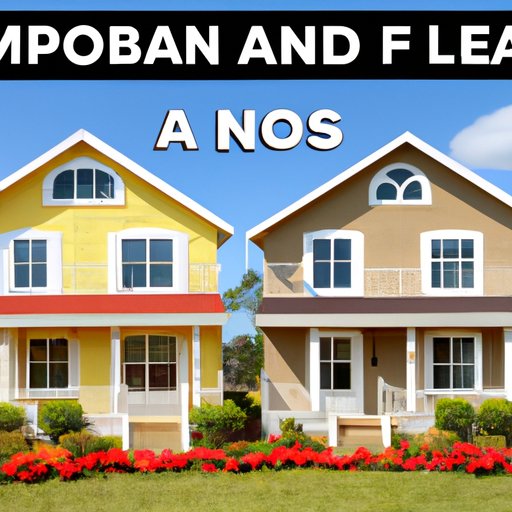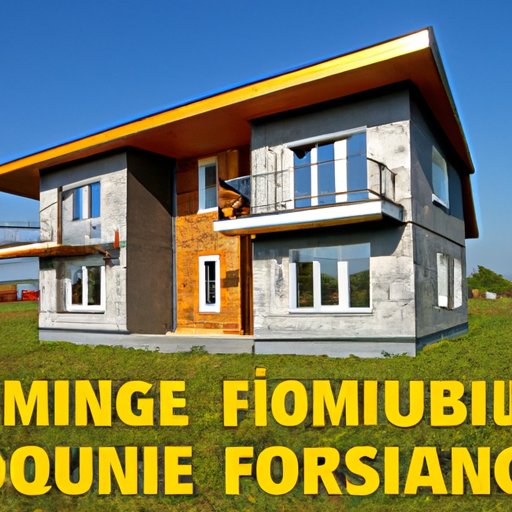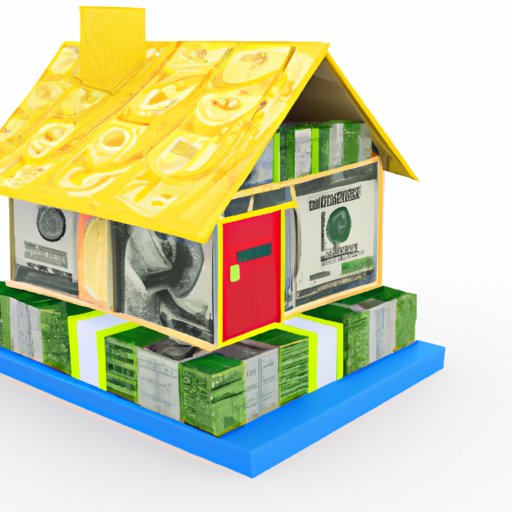
Exploring Financing Options for Modular Homes
When it comes to financing a modular home, there are several different options available. It is important to understand what these options are in order to make an informed decision. This guide will explore the various financing options for modular homes, including traditional home loans, modular home loans, and other financing options. We will also compare traditional and modular home loans and discuss the process of financing modular homes.

Traditional Home Loans vs. Modular Home Loans
When it comes to financing a modular home, many people assume that traditional home loans are their only option. However, there are also specialized modular home loans available. Both traditional home loans and modular home loans have similarities and differences.
Similarities
Both traditional home loans and modular home loans require a down payment, as well as a good credit score and steady income. The amount of the down payment can vary depending on the loan program, but typically ranges from 3-20%. In addition, both types of loans usually require private mortgage insurance (PMI) if the down payment is less than 20%.
Differences
The main difference between traditional home loans and modular home loans is the type of property they are used to purchase. Traditional home loans are used to purchase existing, stick-built homes, while modular home loans are used to purchase modular homes. Additionally, modular home loans may have higher interest rates and stricter lending requirements than traditional home loans.
Understanding the Process of Financing Modular Homes
Once you have decided which type of loan you want to pursue, the next step is to understand the process of financing a modular home. This includes qualifying for a loan, applying for a loan, and closing on a loan.
Qualifying for a Loan
In order to qualify for a loan, you must meet certain criteria such as having a good credit score, a steady income, and enough funds for a down payment. Additionally, lenders will look at your debt-to-income ratio to determine if you can afford to take on additional debt.
Applying for a Loan
Once you have determined that you meet the qualifications for a loan, the next step is to apply for a loan. This involves submitting an application to the lender and providing them with all the necessary information, such as your financial history, employment history, and any other relevant documents.
Closing on a Loan
Once your application has been approved by the lender, the final step is to close on the loan. This involves signing the loan documents and paying the associated fees. Once this is done, you will officially be a homeowner!

Advantages and Disadvantages of Financing Modular Homes
Before deciding if financing a modular home is right for you, it is important to consider the advantages and disadvantages.
Advantages
One of the main advantages of financing a modular home is that it is typically less expensive than financing a stick-built home. Additionally, modular homes are often built faster, so you could move into your new home sooner than if you were to buy a stick-built home. Lastly, modular homes are often more energy-efficient than stick-built homes, which could lead to lower utility bills.
Disadvantages
The main disadvantage of financing a modular home is that it may be more difficult to qualify for a loan. Additionally, modular home loans may have higher interest rates and stricter lending requirements than traditional home loans. Lastly, modular homes may not appreciate in value as quickly as stick-built homes, so you may not see a return on your investment.
Tips for Finding the Best Financing for Modular Homes
Now that you understand the process of financing a modular home, here are some tips to help you find the best financing for your needs:
Shop Around for Rates and Terms
It is important to shop around and compare different lenders in order to find the best rates and terms. This will help ensure that you are getting the best deal possible.
Consider Government Programs
There are several government programs available that can help make financing a modular home more affordable. These programs include FHA loans, VA loans, and USDA loans.
Understand Your Credit Score
Your credit score plays an important role in determining whether or not you qualify for a loan. It is important to understand your credit score and work to improve it if necessary.
Ask Questions
Don’t be afraid to ask questions when shopping for a loan. It is important to understand all the details before making a decision.
Seek Professional Help
If you are still unsure of what type of loan is best for you, consider seeking professional help. A qualified financial advisor can help you navigate the process and find the best loan for your needs.
Conclusion
Financing a modular home can be a complex process, but understanding the different options available and following the tips outlined above can help make it easier. With the right loan and a little bit of research, you can find the perfect financing solution for your modular home.
(Note: Is this article not meeting your expectations? Do you have knowledge or insights to share? Unlock new opportunities and expand your reach by joining our authors team. Click Registration to join us and share your expertise with our readers.)
